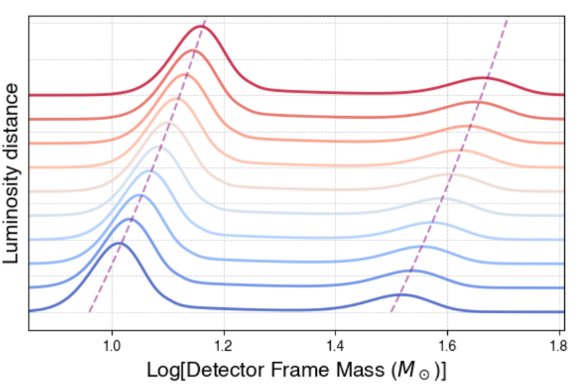Cosmology with Spectral Sirens
This project uses spectral sirens to constrain cosmological parameters, particularly the Hubble constant (H₀). Unlike traditional methods, spectral sirens don’t require electromagnetic counterparts. Instead, it exploits intrinsic features in the distribution of binary black hole (BBH) mass function to extract cosmological information
Assuming a binary black hole (BBH) mass distribution, we generate samples of masses and luminosity distances, incorporating redshift-dependent evolution of the population. Our method simultaneously fits for H0 and the evolution of the BBH mass distribution peaks as a function of redshift. We examine how factors such as peak evolution, measurement errors in mass and distance, and the number of detected events influence the resulting H0 posterior. We demonstrate that, with a sufficiently large sample of detections and realistic observational uncertainties, this approach can achieve percent-level precision on H0. These results highlight the promise of spectral sirens as a complementary probe of cosmic expansion in upcoming gravitational-wave surveys.

This project builds toward future applications with the Einstein Telescope and Cosmic Explorer. Spectral sirens are an exciting and tenable method for obtaining percent and sub-percent level measurements of H₀.
Banner image credit: Einstein Telescope